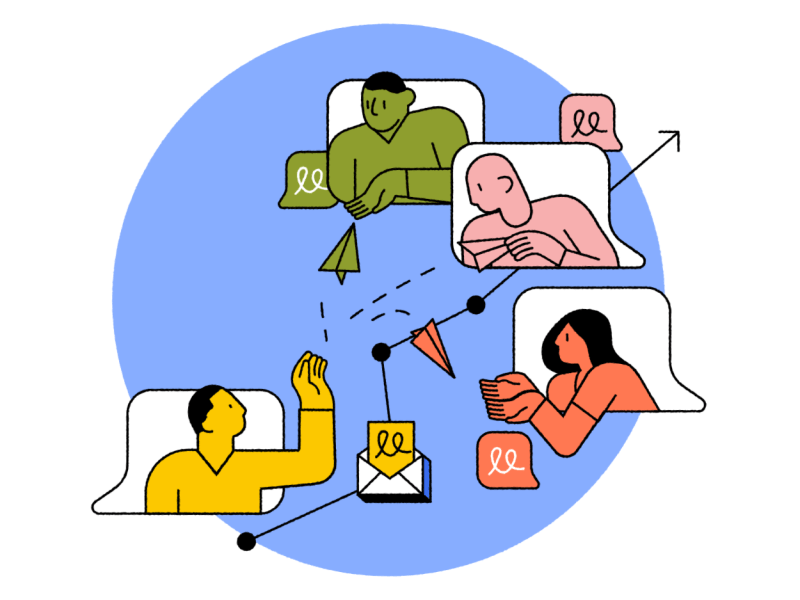There is a lot of confusion out there about CRM and CEM.
CRM focuses on driving sales, tracking customers, resolving issues, and managing customer relationships.
CRM is more about the numbers – it’s all about generating revenue for your company.
CEM has a more holistic approach to attracting and retaining customers by providing them with an amazing experience that they will want to come back for again and again.

The CRM-CEM balance is central to customer satisfaction.
To keep your customers happy it’s important to provide excellent service as well as adequate access to information.
However, it is crucial to differentiate between the two concepts.
Here’s what you need to know about CRM and CEM, as well as the benefits that stem from providing exceptional customer service.
Great customer-focused interactions are crucial for generating more business in your company, whether it be through sales or excellent first impressions.
Here’s how each of these two types of programs can aid
Table of Contents
CRM and CEM: How They Affect Your Customers
Lets Start With CRM
The goal of CRM is to retain existing customers by maintaining then improving the relationship your company has with them.
CRM is not simply a piece of software: it encompasses various best practices and strategies that are sometimes called “Customer Relationship Management”.
Wxora 360, Salesforce, Microsoft Dynamics, and NetSuite are all types of customer-relationship management tools.

These platforms use data to calculate how frequently customers buy from you, the amount they spend in total, as well as other aspects related to their experience with your company such as web interaction habits and service interactions.
As For CEM
Unlike its CRM counterpart, CEM seeks to provide the most rewarding customer experience; from when you first interact with a customer and track them until they purchase and then even afterward.

So how can CEM be used?
This holistic approach for attracting and retaining customers has an emphasis on reviews, surveys, communication with the customer.
To make it simple, that kind of questions make sense for CEM:
- Regardless of amount spent, did the customer have a good experience shopping in your store or placing an order on your website?
- Do you know how they like to communicate?
- What their concerns are?
Once you have an accurate answer for these questions based on the surveys, reviews or direct feedback from customers.
You’ll notice a boost in customer loyalty which can, in turn, help your organization run more efficiently.
CRM and CEM are almost the same thing, but CRM focuses more on the relationship and numbers while CEM is more focused on the experience for customers.
5 Great CEM Practices Can Create a Better Customer Experience, Here is How:
1) Establishing a nurturing relationship:
Building a strong and lasting relationship with customers takes years of trust, relentless pursuit & persistence to gain & maintain confidence.
Customer service centers occupy a key position in the customer life cycle, well-positioned to reinforce this strategy.
They need to make an effort to become a friend of the customer and offer solutions tailored for customers’ needs.
The perspective agents have when it comes to customer engagement must be more than just making a sale, but also earning the customer’s heart.
2) Connecting to customers in real-time:
In the age of immediate connectivity, customers want a quick response to their queries.
They expect a response in 2-3 hours. Gone the days they have to wait from 24-72 hours.
With smartphones and cloud-based tools available at any time, features like live chat and personal telephone calls
A business that is able to provide this type of service will be able to keep its customers happy and drive guarantee a fast customer response.sales from new ones.
3) Offering a diverse range of customer touchpoints
Don’t think of it as just email, social media or phone alone.
A company needs to have contact points across channels and remain responsive regardless of the customer interaction they are currently using.
Finally, there needs to be a seamless service that allows customers to interact with your brand in the same way across platforms.
This service can be found on Wxora 360 platform, drop us a message to discuss further.
4) Personalized services
Sometimes, providing an exclusive experience to customers is the only way.
Such an experience not only enhances customer loyalty but also helps businesses gather more information about current and potential customers, in a seamless manner.
5) Focusing metrics on the customers
A customer experience manager’s role is to focus on giving customers a seamless and memorable experience during their lifecycle with your company.
To do this, the CEM team will be focusing on understanding what drives brand differentiation, preference, and customer loyalty.
Last but not least…
Implementing CEM isn’t a simple task, and typically takes weeks or months of work.
As opposed to one-off promotions that may net some new customers, the goal is to actually create an experience so good that it’s better than you could have hoped for.
For example, if your customer has high expectations of what their car will look like after they detail it themselves at home, but you exceed those expectations with personalized attention and high-quality results then they are likely to tell other people about the experience soon and continue coming back.

The customer experience journey
Chief experience officers are in charge of a company’s customer experience at every touchpoint with its customers.
This means understanding where these interactions happen and crafting a map to highlight them, like the customer journey diagram that illustrates all the different ways people come into contact with any given brand.

At minimum, the map will have four sections:
Research. The customer discovery stage can occur through a variety of ways, such as through web browsing, word-of-mouth promotions and even social media.
Comparison. This is an in-depth view of what customers want and need from the competition – not just about your own product offerings.
Purchase. We have reached the “business win” of CRM, which is to say customer harvesting through sales and service. This is only the first stage, however–we also need to think about retaining customers by providing them with a great experience.
Support. Customer experience and support must be carefully thought out when a customer has just purchased, or the loyalty will break..
Customer personas are important for developing the customer journey map.
CEM research helps to identify the main archetypes of customers and determines how to offer them a unique, tailored experience during their lifecycle with a company of product or service.
Successful Examples Of Customer Experience
1) Spotify

Spotify is a groundbreaking music streaming service. It offers personalized playlists of high quality to listeners, and rewards active users with special gifts such as custom radio stations.
Spotify has proven to be a reputable company for the way it’s changed how we listen to music.
With its top-of the-line streaming technology and unique customer interactions including fun and games, Spotify sets the bar for customer experience management.
2) Amazon

One of the most successful apps in e-commerce is Amazon.com, and it’s become the company’s signature success story because of their great experience management approach.
One aspect they might be best known for is their “set a reminder” feature, which gets customers coming back to purchase over and over again by keeping track as they browse through what’s available on the app.
Amazon monitors their social media sites 24 hours a day, seven days per week in seven languages.
The company’s search algorithm is quite impressive as well; it can search through various parameters just like Google so users are able to get exactly what they want with ease.
3) Taylor & Hart

This is the experience management strategy for a jewelery retailer company that has gained fame in its niche.
They wanted to turn casual customers into one-time purchasers and their purchasers into lifetime promoters.
So, they focus on measuring the net promoter score (NPS) at two different points: when you place an order and when you receive it.
The company’s live NPS feedback score was displayed in the dashboard, which could be accessed by everyone on the team.
To improve their customer experience and keep customers coming back, they combined their efforts and fixed every issue across production to shipping to resolve complaints made by users.
Once these changes were made, they reached an NPS score of 80–the highest within the industry–and brought in $4.5 million EUR of revenue for just one year!
Conclusion and Next Steps
Customer retention is key to the success of any business, and customers will be more likely to buy from you if they know you are invested in their well-being.
To create sustained value for your sales and customer experience processes, you may want to consider investing in both Customer Experience Management and Customer Relationship Management.
Wxora 360 leverages a diverse range of evidence-based consumer engagement tactics (including behavioral analytics) to help organizations on their path to increasing retention and success.
A comprehensive customer engagement and satisfaction program must offer a full suite of choices–loyalty, gamification, incentives–to work in tandem. Wxora 360 offers customers a range of experience management tools on a single platform.
